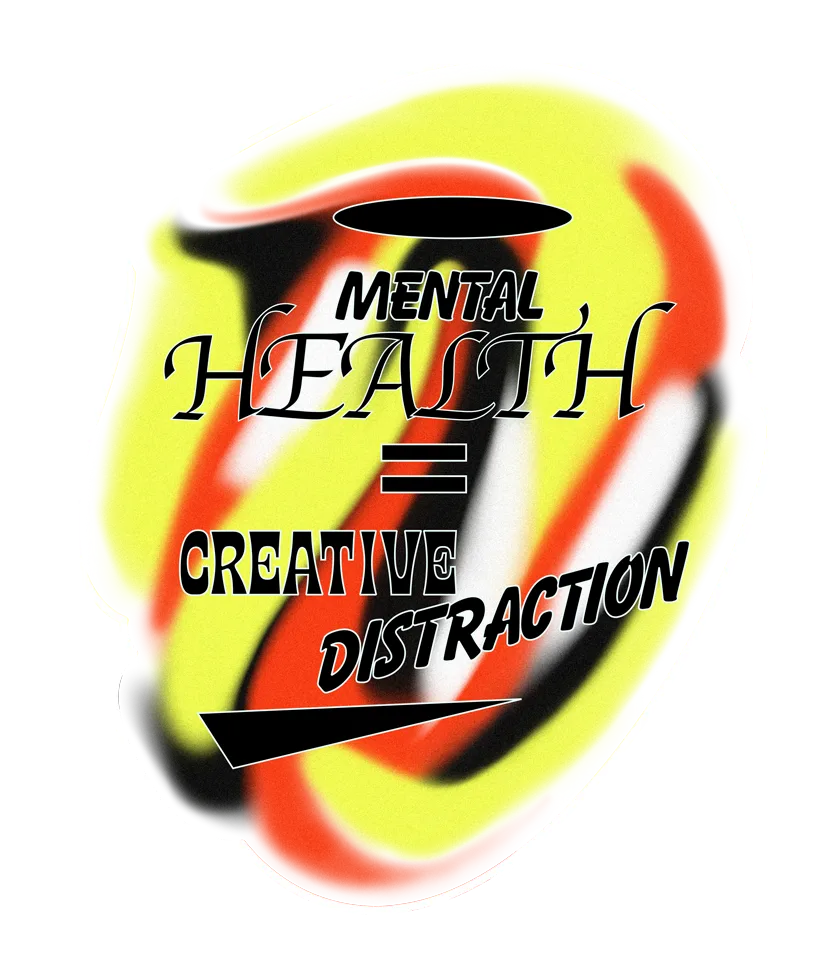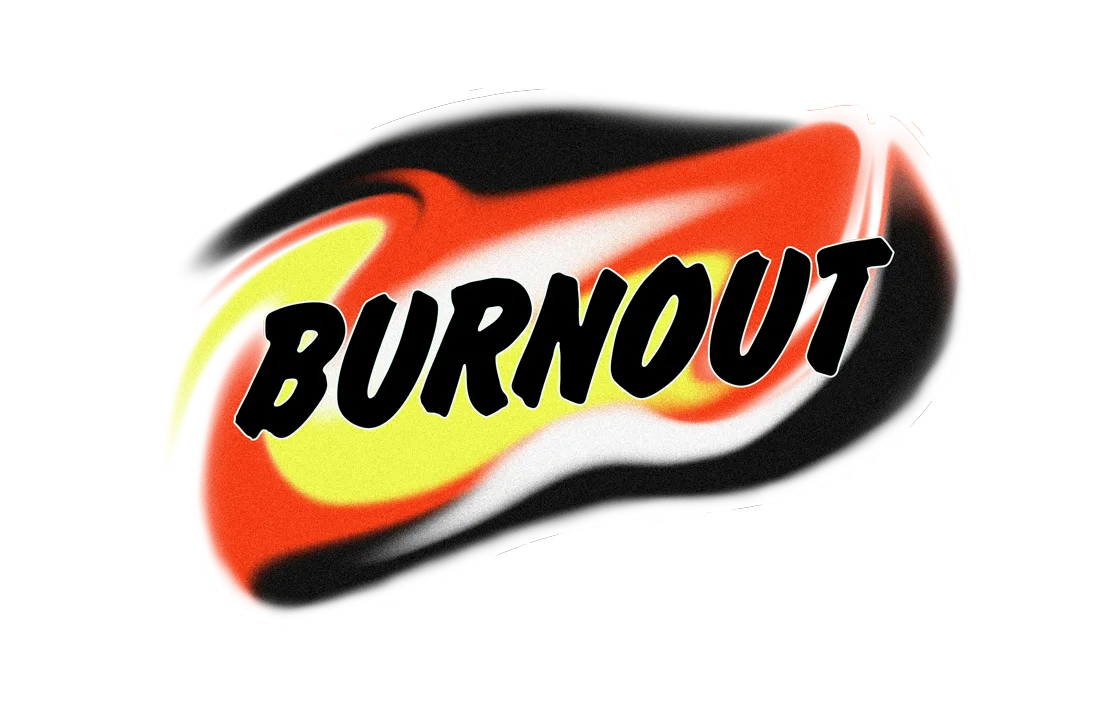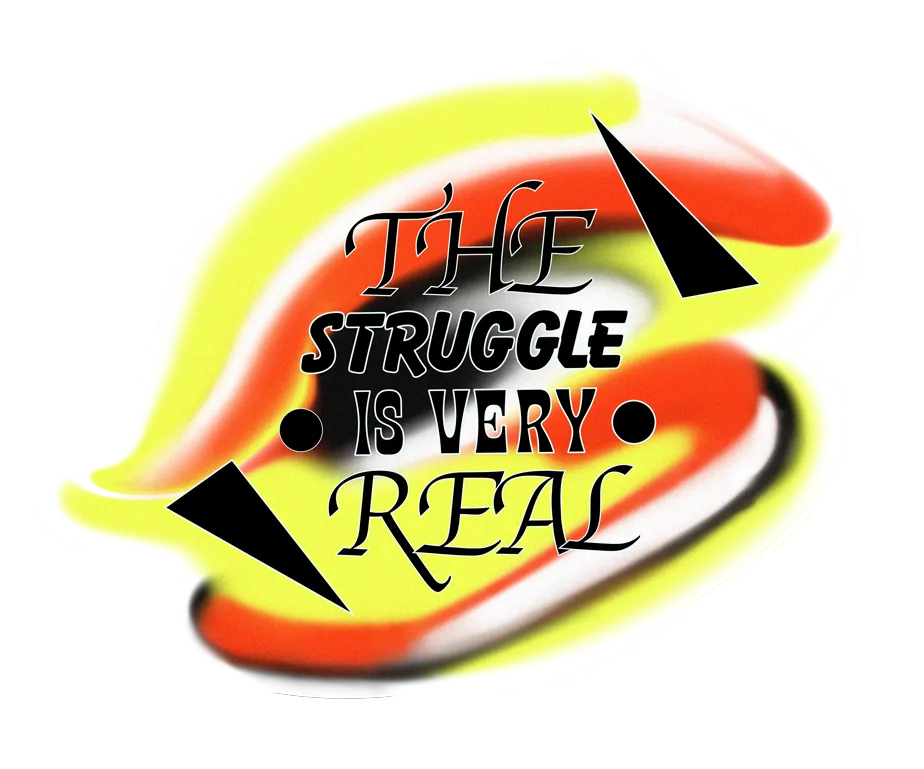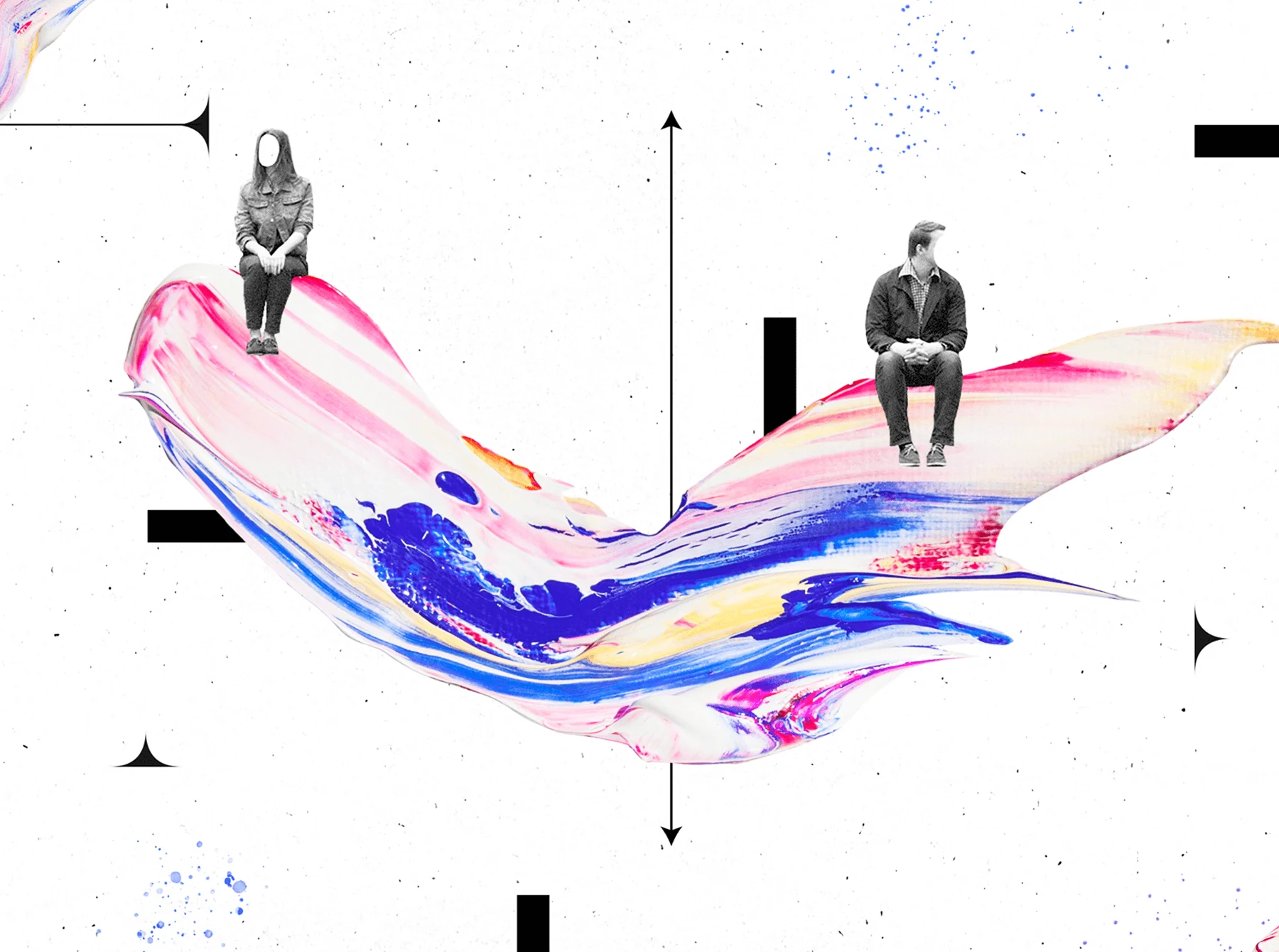

This year’s Ideas Report uncovered some startling facts when it comes to Generation Z. Despite being the most creative cohort of respondents, those under 25 are feeling undervalued, underpaid and overworked, with as many as 50 percent citing mental health as the main creative distraction during the pandemic, and 60 percent thinking of switching jobs in the next six months. Moya Lothian-McLean explains why the creative industry needs to shape up, or risk losing its next generation of talent.
Designs by Raissa Pardini.
See the full Ideas Report and find out what the future of creative work looks like at WeTransfer Ideas Report 2021.
The myth of the tortured artist stretches back to ancient times. Optimum creativity, we are often told, can only emerge under stressful and adverse conditions. Struggle is intrinsic to the production of great art.
Only in the past few years, in line with increasing evidence of a global mental-health crisis, have we begun to question this myth. There is now far wider recognition that debilitating struggle—the sort of desperate circumstances that can destroy a person—is not something to be romanticized but rather an indication of a system that is not working to support those within it.
Awareness does not necessarily lead to action though. And, from the testimony of Generation Z (those born between 1997 and 2012), they’re subject to the same lack of safety net that has long dogged the world’s creatives, from ancient Greek poets and philosophers all the way through to Vincent van Gogh.
Insights from over 10,000 creatives featured in WeTransfer’s mammoth Ideas Report 2021 suggest that we’re at risk of allowing “burnout” to become the defining word of Gen Z’s creative experience.
Collective action both combats the individual strain put on Gen Z creatives and amplifies demands for employers to actually listen.
Sixty percent of Gen Z respondents, dotted around the globe, said that they were considering switching jobs in the next few months. Unsurprising—it’s become an in-joke within my circles to outline a fantasy that involves jacking in the instability of a creative career for a solid, “traditional” nine to five and heading to the countryside. No wonder that Gen Z creatives on platforms such as TikTok are drawn to cozy, nostalgic aesthetics like cottagecore that evoke a supposedly simpler, more sustainable time. It’s a natural response to existing in a field where being overworked, underpaid and isolated is the norm, leading to a breakdown in mental wellbeing—50 percent of those surveyed by WeTransfer cited mental health as their chief creative distraction.

Some of the issues Gen Z creatives are grappling with aren’t particularly new. From India to the UK, the lack of funding for the arts and for creative industries is well documented. Being a “creative” is often seen as a passion project, rather than a profession. It’s long been an industry dominated by freelance workers, who too regularly find themselves shortchanged (one 2016 report found that freelance creatives in the UK lost an annual £5,394 through working for free), largely due to a lack of industry-wide set rates to use as guidelines for how much their labor is worth.
For Gen Z, entering this arena as workers fresh to the labor market, the struggle is very real. But they’re at a brand new type of sharp end. As creatives who are often working in cutting-edge sectors, such as content creation, they exist in what’s essentially a Wild West when it comes to structures like “industry norms.”
The lack of established practice in these young fields allows for freedom and flexibility regarding the creation of exciting new content—but it’s detrimental in its dearth of personal support networks or industry standards that can be referred to, such as a base rate for a 60-second piece of branded video content. Young marginalized creators are at particular risk of exploitation; not only is their age likely to make them more susceptible to being shortchanged, ethnicity and gender pay gaps also come into play.

Take the case of Sydney McRae, a Black Gen Z TikToker who has attracted over one million followers on the platform after creating viral dance challenges. In a Bloomberg investigation earlier this year, McRae laid out her discovery that, after being paid $700 by Universal Music Group to create a dance to accompany a new release, the firm had subsequently shelled out thousands more to white TikTok influencer Addison Rae just to perform McRae’s choreography. Stories of ill treatment are far too commonplace among Gen Z creatives, who often feel pushed into having to decide between advancing in their chosen industry and valuing their mental wellbeing – and worth.
With so many needing more than one gig to cover their basic bills, we’ve also watched a nascent, Gen Z-specific “hustle culture” emerge. It’s not thanks to any deeply entrenched desire to work 24/7, but instead the symptom of existing in a world where “secure” jobs are scarce but the cost of living is rising. Even before the COVID-19 pandemic, youth unemployment was a cause for concern from Africa to Europe; now it’s been exacerbated still further. Young creatives are feeling the strain, working in an industry already plagued by precarious work models and zero-hour contracts. Juggling multiple roles and working alone are playing havoc with our mental health. As reported by the American Psychological Association, Gen Z are already more likely than any other age cohort to report mental-health concerns, while a study by the Psychology Research Institute at Ulster University suggested that conditions such as depression are “three times more likely” for those working in creative industries.
Factor in as well external pressures caused by global crises that Gen Z feel they have inherited, and it’s understandable that the creative spirit might be a little dampened, whether by the enormity of the climate catastrophe or continuing inequality. As WeTransfer discovered, Gen Z are resentful—75 percent believe it’s the job of brands and businesses to take on the mantle of cleaning up the messes made before their age bracket was even born. Over half of Gen Z say they are committed to tackling climate, social and racial issues in their country, but, at only 58 percent, they have the lowest professed levels of commitment to tackling such issues across all the age groups surveyed. The youth are too tired for change—and that’s a problem.

Doom-laden as these findings seem, there are solutions on the horizon. A culture of transparency is being championed among Gen Z (and millennial) creatives when it comes to working practices and payment. Social media is being used to shame exploitative employers, share rates and create organic solidarity networks for those who don’t have the advantage of nepotism. Gen Z are coming of working age in an era of renewed union activity, advocated for by millennials before them. Creatives are unionizing at a fast lick, from workers at large media corporations to influencers, thanks in part to the ability to organize via digital platforms. Collective action both combats the individual strain put on Gen Z creatives and amplifies demands for employers to actually listen—whether that’s the need to take mental health beyond lip service, pay a fair wage for labor, or commit to climate action on behalf of their workers.
As Gen Z creatives have already recognized in part, an inventive, holistic approach is the only way to confront the multiple issues facing them. That means outlining an ideal future—beyond moving to a black-and-white cottage in a bucolic paradise—and making some key demands: standardized, industry-wide minimum rates; an international network of creatives to organize with, and a series of requirements for bosses and brands they work with, like being committed to being carbon-free within the next three years. Ideas like this won’t solve everything, but the pressure on Gen Z talent to do it all—pay their rent, produce great work, sort out geopolitics—by themselves will be relieved to a degree that ensures they can get on with what is of primary importance to them: creating.








